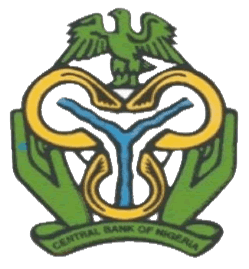Please use this identifier to cite or link to this item:
https://library.cbn.gov.ng:8443/jspui/handle/123456789/314| Title: | Matthew Higgins and Thomas Klitgaard's reserve accumulation: Implications for Global Capital Flows and Financial Market; Current Issues in Economics and Finance: Federal Reserve Bank of New York, September/October 2004: a review. |
| Authors: | Nwaoba, P. I. |
| Keywords: | Foreign currency assets, Domestic currency assets, Foreign exchange reserves, Central banks, Capital flows, Reserve purchases, Foreign currency reserves, Exchange rates. |
| Issue Date: | Mar-2005 |
| Publisher: | Central Bank of Nigeria, Research Department. |
| Citation: | Nwaoba, P. I. (2005). Matthew Higgins and Thomas Klitgaard's reserve accumulation: Implications for Global Capital Flows and Financial Market; Current Issues in Economics and Finance: Federal Reserve Bank of New York, September/October 2004: a review . Economic and Financial Review, 43(1), 71-75. |
| Series/Report no.: | Vol. 43;No. 1 |
| Abstract: | The paper examines the accumulation of foreign currency reserve assets and explores its implications for monetary policy, global financial markets and the U.S. economy. It reveals an upward surge in Central Bank holdings of foreign currency assets or foreign exchange reserves in recent years, particularly in foreign government securities. The paper notes that most of the recent reserve purchases were made by Japan and other emerging Asia countries. Similarly, the scale of the purchases made their central banks key players in setting the pattern of capital flows across countries. The authors state that holdings of foreign assets have doubled since 1995 and assumed a more important role in central bank balance sheets and monetary policy operations. They attribute this trend to build-up of reserves by many central banks for the purpose of stabilizing their currencies. Analyzing the benefits and costs of reserve purchases, the paper reveals that they allow a country to insure itself against a destabilizing run on its domestic currency whose value it helps to stabilize over time. However, on the cost side, central banks loose interest income through reserve purchases and get exposed to potentially large capital losses whenever domestic currency strengthens against reserve currencies. |
| URI: | http://library.cbn.gov.ng:8092/jspui/handle/123456789/314 |
| Appears in Collections: | Economic and Financial Review |
Files in This Item:
| File | Description | Size | Format | |
|---|---|---|---|---|
| Matthew Higgins and Thamas Klitgaard reserve accumulation implications for global capital flows and financial market.pdf | 279.88 kB | Adobe PDF |  View/Open |
Items in DSpace are protected by copyright, with all rights reserved, unless otherwise indicated.
Admin Tools
